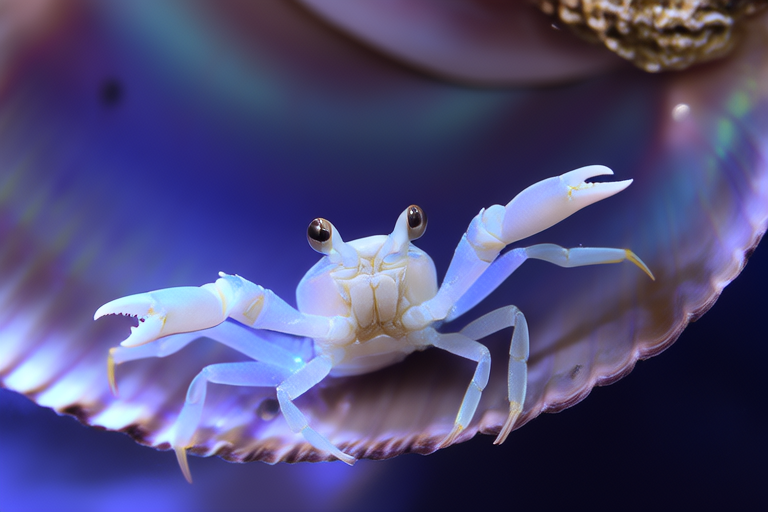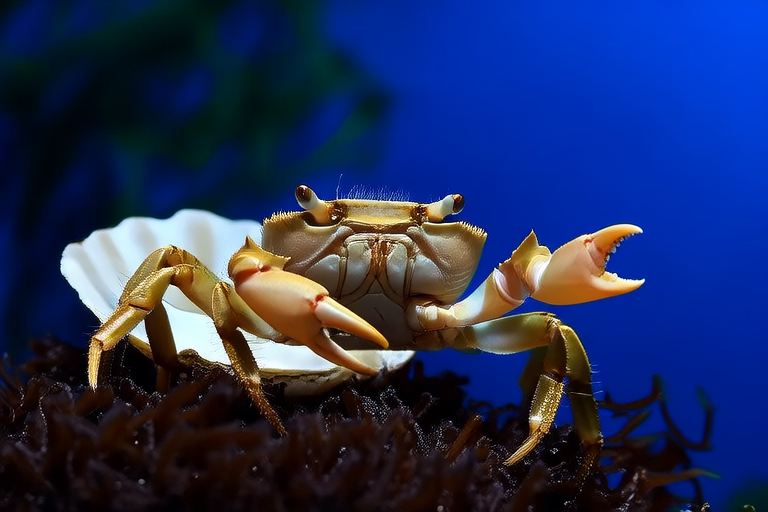
The Intriguing World of Pea Crabs: A Microcosmic Marvel
In the vast and mysterious realm of marine life, there exists a fascinating phenomenon where tiny crustaceans, known as pea crabs, establish intimate relationships with their host organisms. These diminutive creatures, no larger than a thumbnail, have evolved an extraordinary lifestyle that is both ecologically significant and scientifically intriguing. This article delves into the unique lifecycle and symbiotic relationship of pea crabs, exploring their physical characteristics, historical context, recent research findings, conservation implications, and the broader impact on marine biodiversity.
Physical Characteristics of Pea Crabs and Their Hosts
Pea crabs, belonging to the family Pinnotheridae, are small, soft-bodied crustaceans that typically range from 3 to 10 millimeters in length. They possess a flattened carapace, which allows them to fit snugly within the body cavities of their hosts. The coloration of pea crabs varies depending on the species and their environment, often matching the hues of their hosts for camouflage. Their hosts, primarily bivalve mollusks such as scallops, oysters, and mussels, are filter feeders that extract nutrients from the water column. These bivalves have thick, protective shells that provide shelter for the pea crabs, ensuring their survival in the harsh marine environment.
Scallops, for instance, are known for their delicate, fan-shaped shells adorned with intricate patterns. They possess numerous small eyes along the edges of their mantle, enabling them to detect changes in light intensity and potential threats. Oysters, on the other hand, have a more robust appearance, with their rough, irregularly shaped shells providing a secure home for pea crabs. Mussels, with their tough, leathery shells, also serve as ideal habitats for these tiny crustaceans. The symbiotic relationship between pea crabs and their hosts is a testament to the remarkable adaptability of marine organisms.
A Historical Perspective
The study of pea crabs dates back centuries, with early observations by naturalists who marveled at the peculiar sight of these small crustaceans living within the bodies of larger marine organisms. In the 18th century, Swedish botanist Carl Linnaeus first described a species of pea crab, marking the beginning of formal documentation in this field. Over time, researchers have uncovered the complexities of this symbiotic relationship, revealing how pea crabs contribute to the overall health and functioning of their hosts.
Historically, pea crabs were considered parasitic, but modern studies have shown that they play a more nuanced role in their ecosystems. While they do consume some of the food filtered by their hosts, they also provide benefits such as cleaning the host’s tissues and deterring predators. This mutualistic relationship highlights the intricate balance of marine ecosystems and underscores the importance of studying these interactions to better understand the dynamics of marine life.
Recent Research Findings
Advancements in technology have allowed scientists to gain deeper insights into the lifecycle and behavior of pea crabs. Researchers have employed techniques such as high-resolution imaging and genetic analysis to explore the mechanisms behind the symbiosis between pea crabs and their hosts. One significant finding is the discovery of specialized structures on the pea crabs’ bodies that enable them to attach securely to their hosts. These structures, known as suckers or setae, allow the crabs to maintain their position within the host’s body cavity, even in turbulent waters.
Recent studies have also shed light on the reproductive strategies of pea crabs. Unlike many other crustaceans, pea crabs do not require external environments for mating. Instead, males and females engage in internal fertilization within the host organism. This adaptation ensures the survival of their offspring in the challenging marine environment. Additionally, researchers have found that the presence of pea crabs can influence the growth and reproduction of their hosts. For example, studies have shown that scallops hosting pea crabs tend to grow faster and produce more offspring compared to those without the symbiotic relationship.





